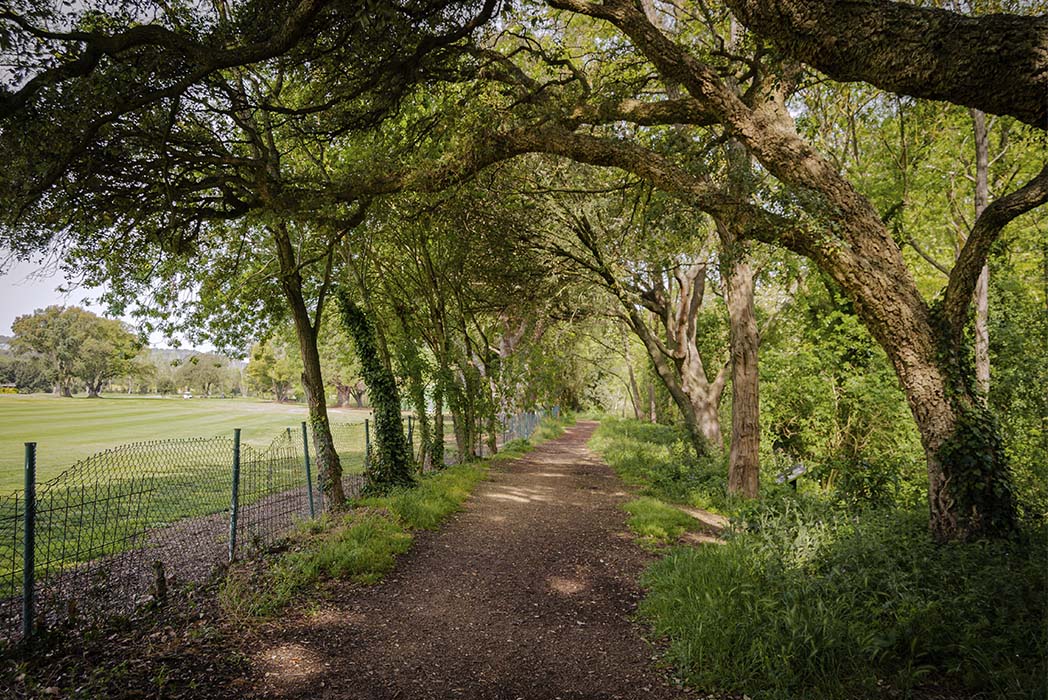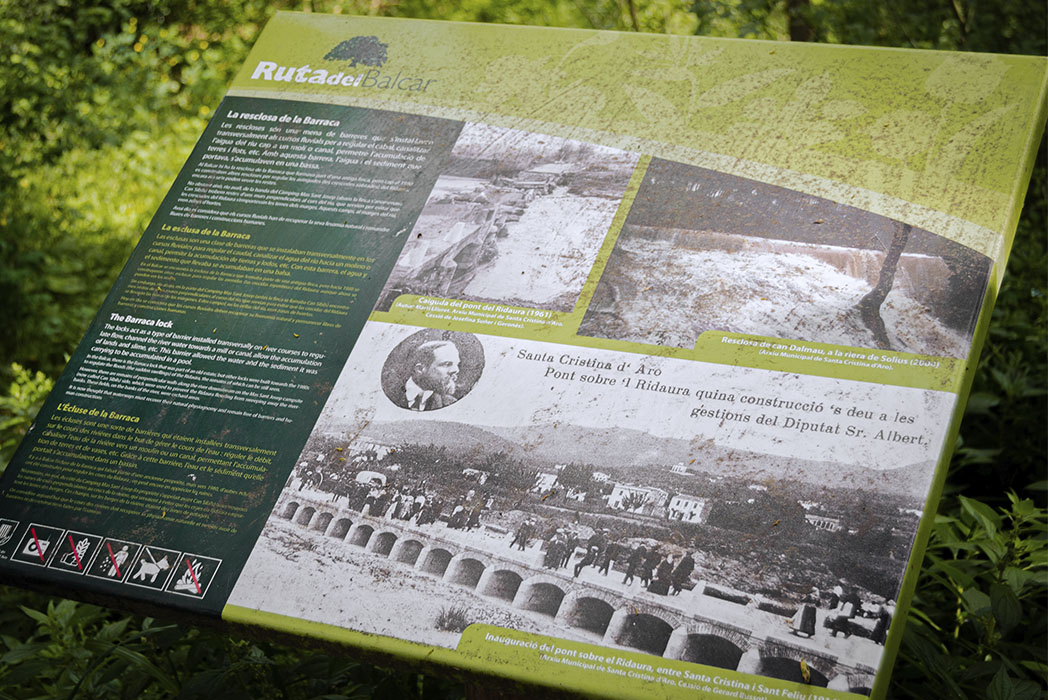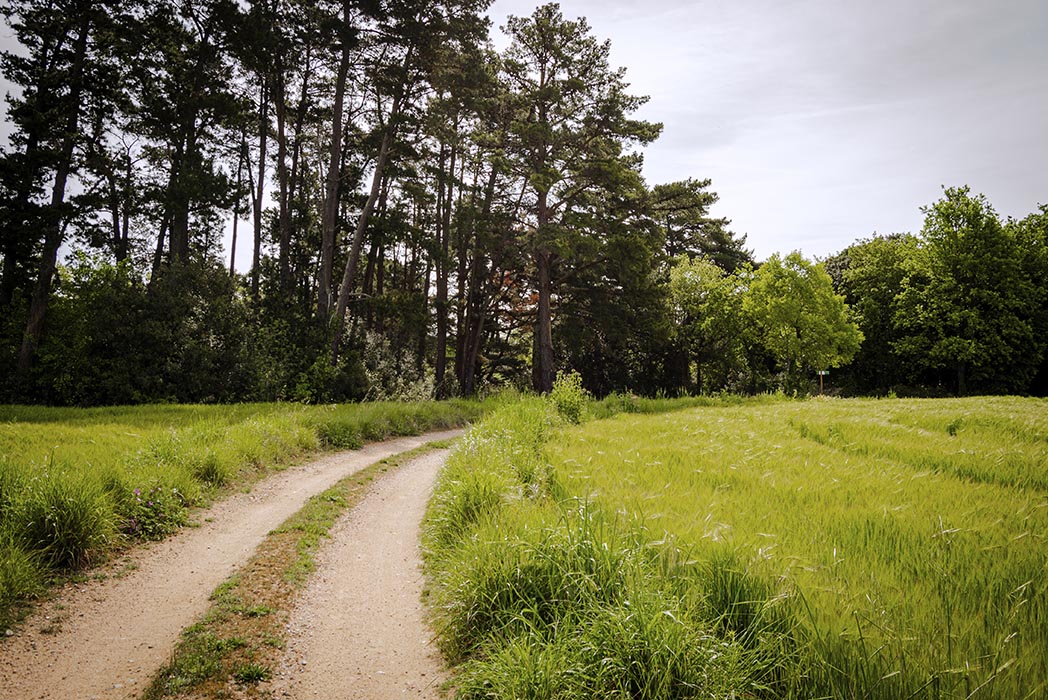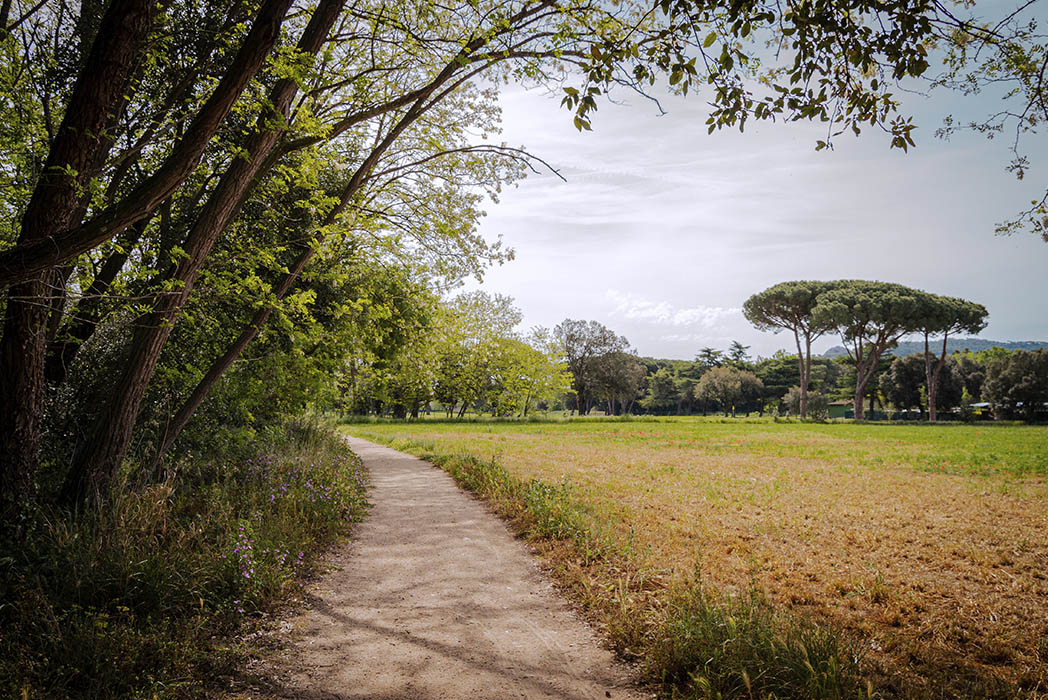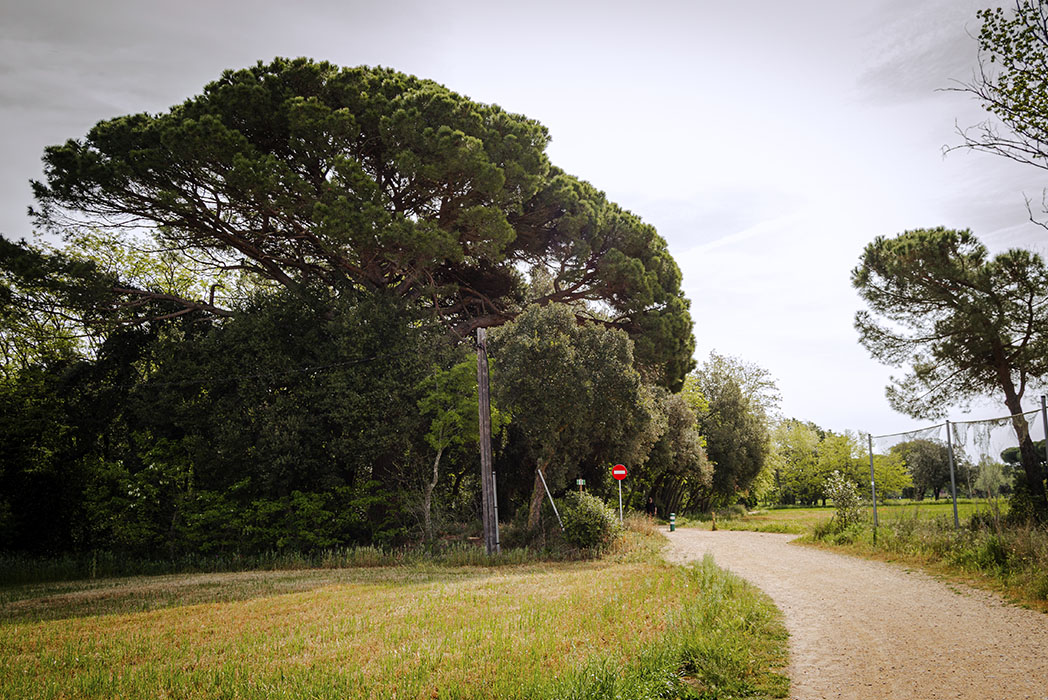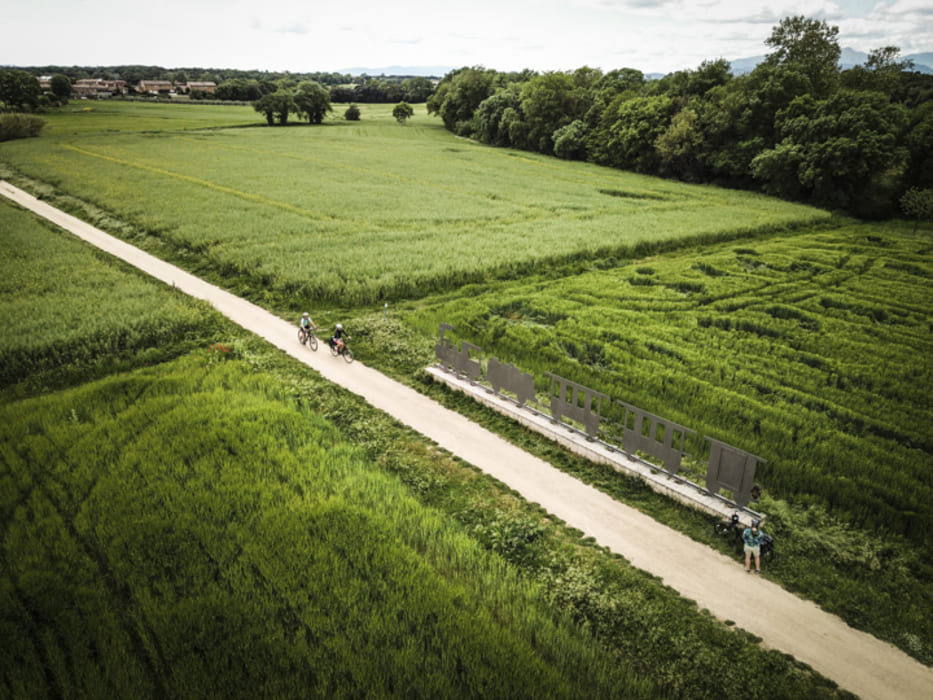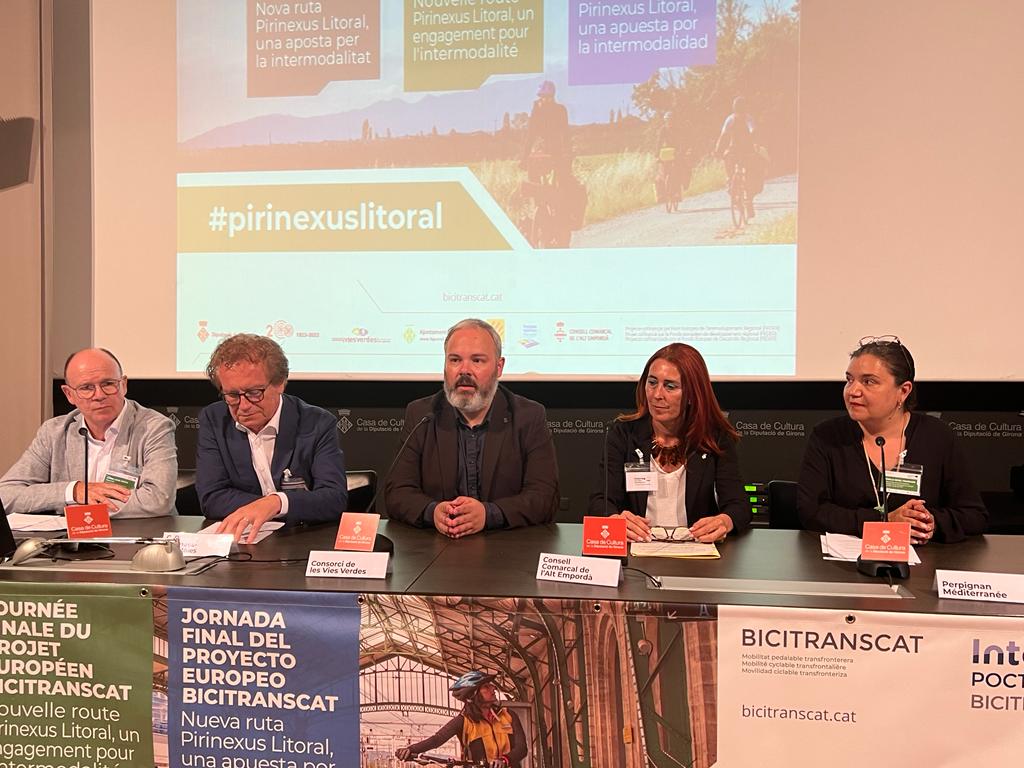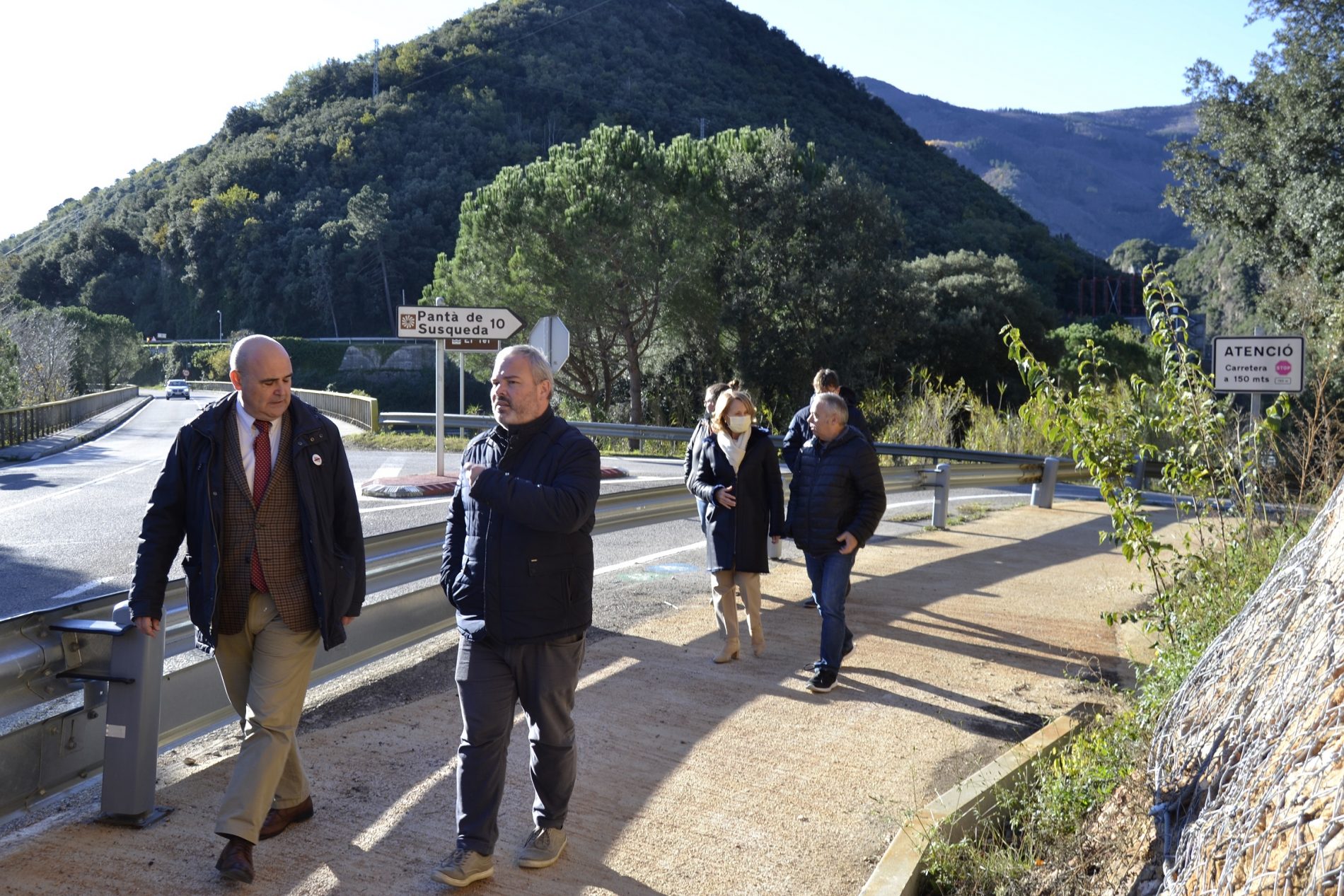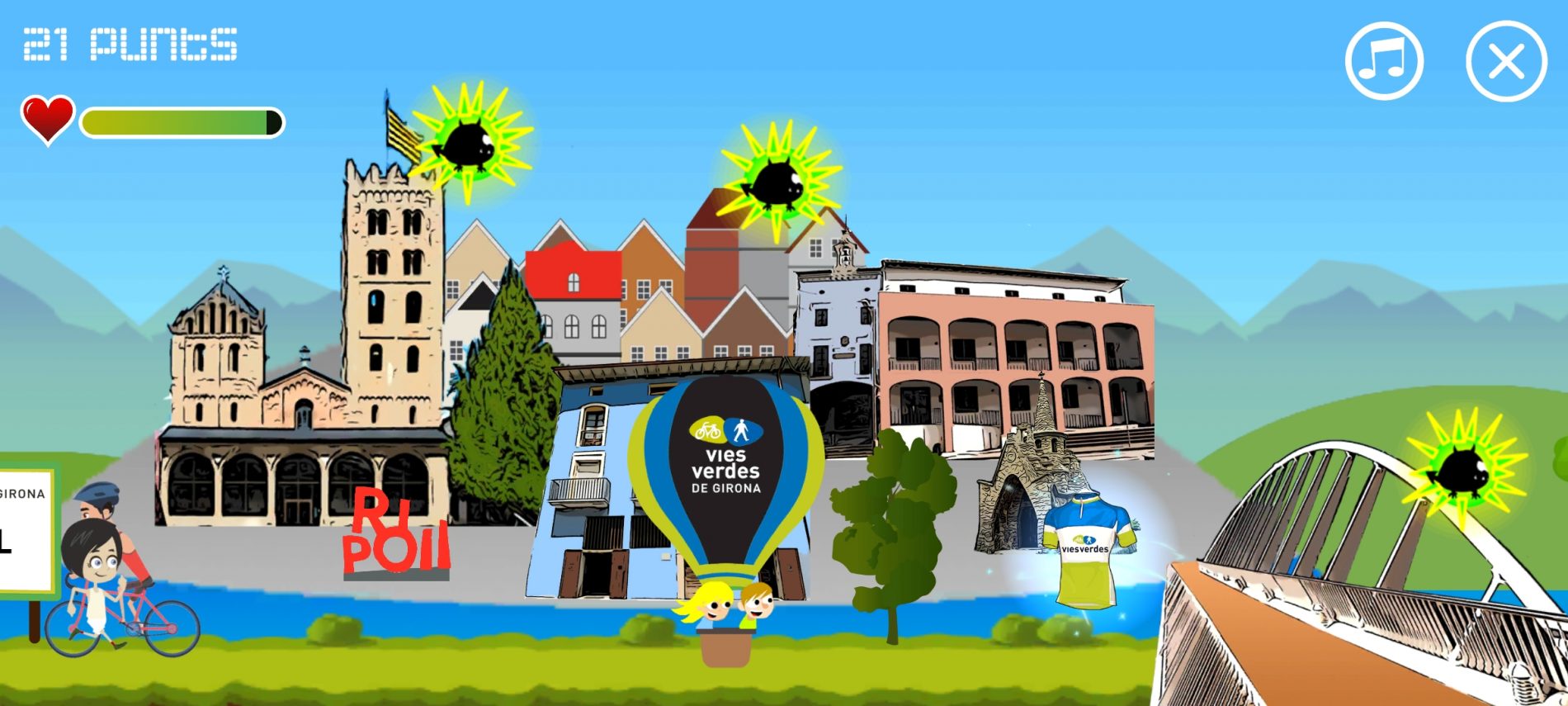The Secret of Santa Cristina d’Aro – The Balcar route
Santa Cristina d’Aro offers nature and heritage lovers a wide range of possibilities for exploring a territory that stretches from the coastal Ardenya to the heart of the Gavarres. This megalithic land par excellence hides archaeological remains of great value.
It was also a source of inspiration for the writer Mercè Rodoreda, who decided to spend the end of her days in Romanyà de la Selva, where her remains lie today.
Finally, in the Solius valley stands the monastery of Santa Maria de Solius, which houses a treasure of thirty-nine dioramas by the late Brother Gilbert Galceran, a monk of Solius.
Places to visit and highlights: the Picant spring, the dioramas of Solius, the Daina cave, the Rodoreda-Romanyà route, the church of Santa Cristina d’Aro, the Balcar route, the Great Museum of Magic, and the Canyet Cove.
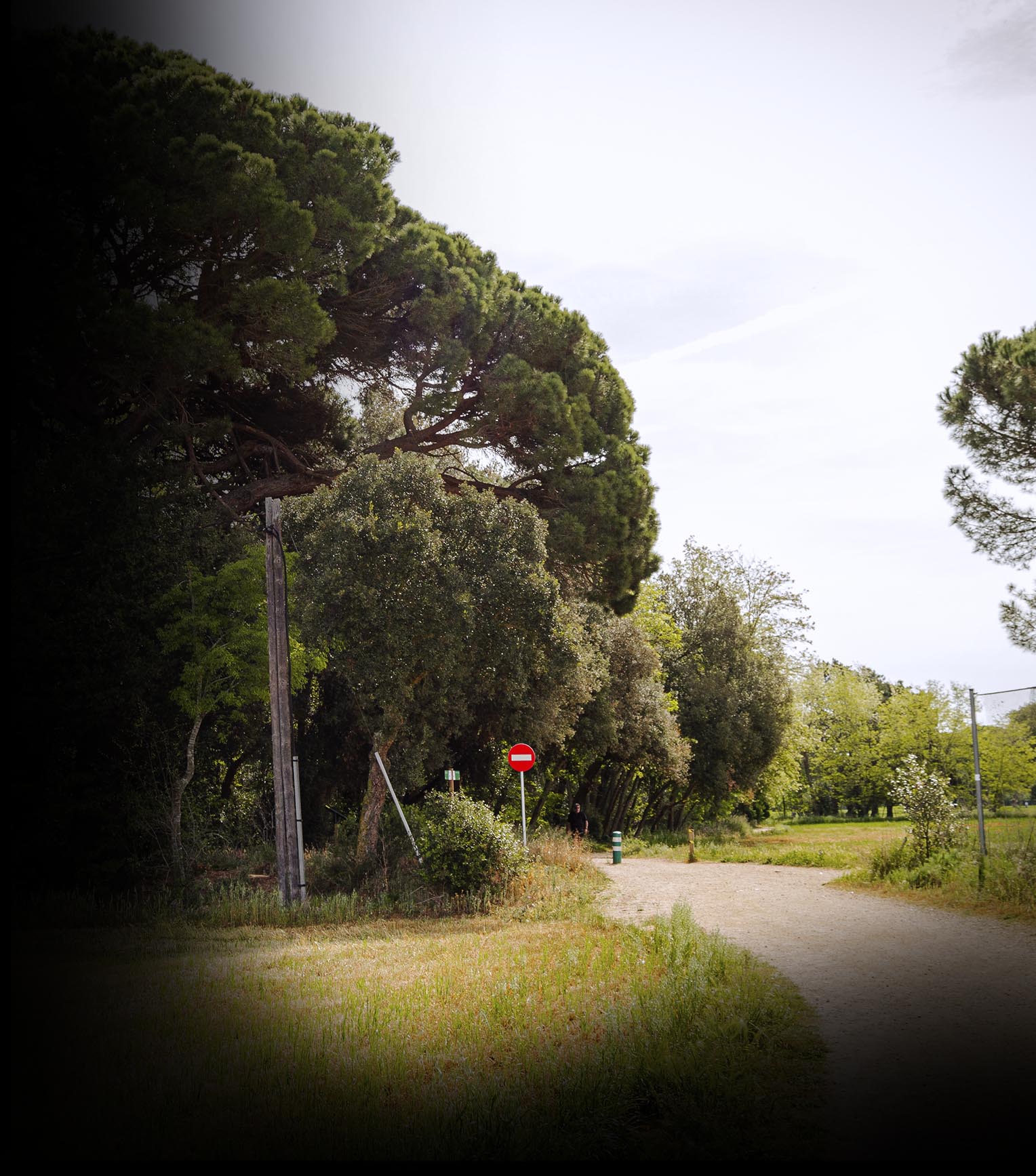
Kilometers 4,6 km
Slope 0,97%
Difficulty Minimum
Pavement Nature route
Maximum altitude 39 m
Minimum altitude 27 m
Transport walk or bike
Secret type River paths
The Balcar forest is located to the west of the municipality of Santa Cristina d’Aro and occupies the Ridaura plain. It is an area of meanders where the banks of the Solius and the Ridaura River converge.
The Balcar area acts as a natural connector of two protected areas: the Ardenya-Cadiretes massif and the Gavarres massif, which are both listed in the Plan for Areas of Natural Interest (PEIN) and included in the Natura 2000 network.
The density of the tree canopies creates a humid and cool microclimate, which favours the growth of many species that are not native to the Mediterranean climate, such as Eurosiberian species.
The proposed itinerary is a circular route that runs around a natural area of great scenic and cultural interest. Along the route, there are several monumental trees, natural species of great interest, remains of locks, etc.
Points of interest:
- The Balcar forest
When we enter the heart of the Balcar, we experience a change in temperature and humidity.
The Balcar forest covers about 7 hectares. This area was acquired in 2007 by the Santa Cristina d’Aro Town Council to preserve its natural values. The word balcar probably comes from balca, the Catalan word for a plant that lives by the water and which must have been abundant in the area in the past.
The Balcar forest is dominated by large cork oaks (Quercus suber), holm oaks (Quercus ilex) and pines (Pinus pinea), with a few hackberries (Celtis australis) and plane trees (Platanus sp.). The trees are of considerable size and create a very shady environment that is home to plants typical of Central Europe, such as the martagon lily (Lilium martagon), a beautiful lily common in the Pyrenees. These plants, typical of colder latitudes, are mixed with a majority of Mediterranean species, such as butcher’s broom (Ruscus acculeatus). There are also many other interesting plants to admire: the delicate lesser celandine (Ranunculus ficaria) or the lesser periwinkle (Vinca minor).
Unfortunately, the original riverside forest has almost disappeared. Instead of poplars, we now find acacias (Robinia pseudoacacia) and reeds (Arundo donax), two invasive species.
- Invisible mammals and birds all year round
Foxes, hedgehogs, badgers… These animals live in the Balcar area, but if you go into the forest, you won’t see them. Where are they?
Wild mammals are elusive and often nocturnal. You can discover their presence through the tracks and remains they leave behind. It is easier to see the multitude of birds that live there all year round: woodpigeons, jays, tits, woodpeckers…
Bird populations increase in winter when many individuals arrive from further north. Mediterranean plants (hackberries, butcher’s brooms, sarsaparillas…) are laden with fruit in winter, so they provide food for birds which, in return, act as involuntary gardeners through their droppings.
The Balcar forest is also a refuge for birds of prey such as eagle owls, tawny owls, buzzards, and sparrowhawks.
The mosaic landscape of the area, with woodland surrounded by open spaces, is home to a high level of biodiversity: fifty different species of diurnal butterflies alone have been described! There are also amphibians of great interest, such as the salamander, or reptiles such as the slow worm, which, despite looking like a snake, is in fact a lizard that has lost its legs.
- Oaks, holm oaks and cork oaks: the three Quercus of Vall d’Aro
It is rare to find these three cousins living together, as they do here. Quercus is a genus of trees characterised by their acorn-shaped fruit. Along this path, there are several specimens of three different Quercus: the holm oak (Quercus ilex), the cork oak (Quercus suber) and the oak (Quercus pubescens).
Of the three, the most characteristic of the area is the cork oak. The mountains surrounding Vall d’Aro are one of the places in Catalunya with the best populations of this tree. Cork, one of the main economic drivers of the area from the second third of the 19th century, is fireproof and is considered to be an adaptation of these trees to survive fires.
Both holm oaks and corks are well adapted to the Mediterranean climate and have small, hard leaves to better withstand hot summers. Oaks are trees with cooler requirements and are abundant in the mid-mountains; they have large, soft leaves, which fall in autumn.
- The Ridaura washing place
Before the arrival of the drinking water network to the houses, women (because women were the ones in charge of washing clothes) had found different mechanisms to have clean water to do the laundry: wells, canals, mines… and, in the beginning, flat stones near a water course. In Santa Cristina, there is evidence of a municipal washing place, located in the Can Roca stream. However, another good spot to wash clothes was by the river Ridaura, on the Vilar road.
The women would kneel next to the running water and do their laundry. They used a wooden washboard where they would place the clothes, lather them with homemade soap (with oil and caustic soda) and, to soften them and remove stains, they would beat them with a wooden paddle. The running water from the river was great for rinsing the clothes! Then they drained them and left them to dry on some bushes, not far from the washing place.
This was a very arduous task because, in addition to carrying the weight of the wet clothes, they washed them kneeling on the ground. Moreover, in winter, the river water was extremely cold… and they had no gloves! This activity was usually done in groups and was used as an opportunity to comment on current affairs with more or less benevolence.
- The Barraca lock
A lock is a type of barrier that was installed across a river course to regulate its flow, to channel the river water towards a mill or canal, to allow the accumulation of earth and sludge, etc. With this barrier, the water and the sediment carried by the river accumulated in a basin.
In the Balcar area, we find the Barraca lock, which was part of an old estate. However, around 1980, other locks were built to regulate the flash floods of the Ridaura River. The remains of these locks can still be seen today.
However, downstream, on the side of the Mas Sant Josep campsite (the estate used to be called Can Sibils), we find the remains of walls perpendicular to the course of the river that were used to prevent the floods of the Ridaura from washing away the land on the riverbanks. These fields by the riverbanks were used as vegetable gardens.
Nowadays, it is thought that river courses should recover their natural appearance and remain free of barriers and human constructions.
- The Ridaura
Following the path, we reach a point where we can cross the river Ridaura and go to the other bank of the Balcar. The Ridaura conditions the waters of the Balcar forest, as it crosses it completely and affects the life inside it.
It is the main biological corridor between Ardenya and Gavarres. This river, which rises at the foot of the Sant Baldiri hermitage, is undoubtedly one of the most important elements of the natural structure of Santa Cristina d’Aro, an ecological connector between the northern and southern sides of the municipality.
The Ridaura is characterised by its Mediterranean seasonal regime, with sequential episodes of flooding during the winter and periods of dryness during the summer at various points along its stretch. As it passes through the Balcar area, the Ridaura conditions the landscape, and the surrounding area becomes a refuge for fauna. An example of this would be bee-eaters (Merops apiaster), which nest on the slopes, in one of the few places in the valley where this species can be found. The humid conditions make this area ideal for the growth of riverside woodland with species such as the alder (Alnus glutinosa), the elm (Ulmus minor), the black poplar (Populus nigra), the white poplar (Populus alba), the willow (Willow acmophylla), the chase tree (Vitex agnus chasteus) and the ash tree (Fraxinus angustifolia).
However, human pressure has accelerated the degradation of the area and, little by little, alien and invasive species such as reeds (Arundo donax), acacias (Robinia pseudoacacia) or pampas grass (Cortaderia Selloana) are beginning to dominate this area.
- The monumental pine tree
This tree has absorbed about 14 tonnes of CO2 during its lifetime.
The age of this stone pine (Pinus pinea) is not known with certainty, but it is estimated to be over two hundred years old. When Napoleon’s troops besieged Girona, this pine tree was probably already born.
This pine is about 20 metres tall and has a trunk circumference of 3.70 metres. Its branches are home to many birds, insects and small mammals that find refuge here. Unlike the white pine, the second most characteristic pine species in the area, the pinecones of the stone pine are edible, and the bark of the trunk has a reddish hue.
To become so large, this tree has incorporated about 14 tonnes of CO2 during its lifetime. In Catalunya, the average CO2 emissions are calculated at around 10 tonnes per inhabitant per year. This means that this tree has taken more than two hundred years to absorb the same amount of CO2 that a single person generates in just under a year and a half.
- The Reixac mill
The Reixac mill is an old farmhouse that bears witness to Santa Cristina’s agricultural past, especially in the Solius and Ardenya-Cadiretes areas.
- Sand and gravel extraction
After crossing the Ridaura bridge on the GIV-6611 road, if the stream is completely dry, we can see how the riverbed is full of sediment. In places like this, farmers and villagers added to their income by extracting gravel and sand.
In the 1950s and 1960s, the arrival of new tourists and the increase in housing construction increased the demand for materials such as sand, gravel, and stone.
The Town Council granted concessions to extract these materials. Even today, along the Ridaura, one can still find the paths used by these farmers to extract these sands. Most of them are located on the left bank and the slope is parallel to the course of the river.


